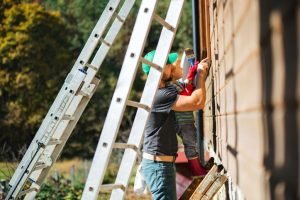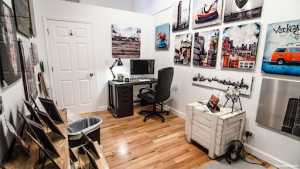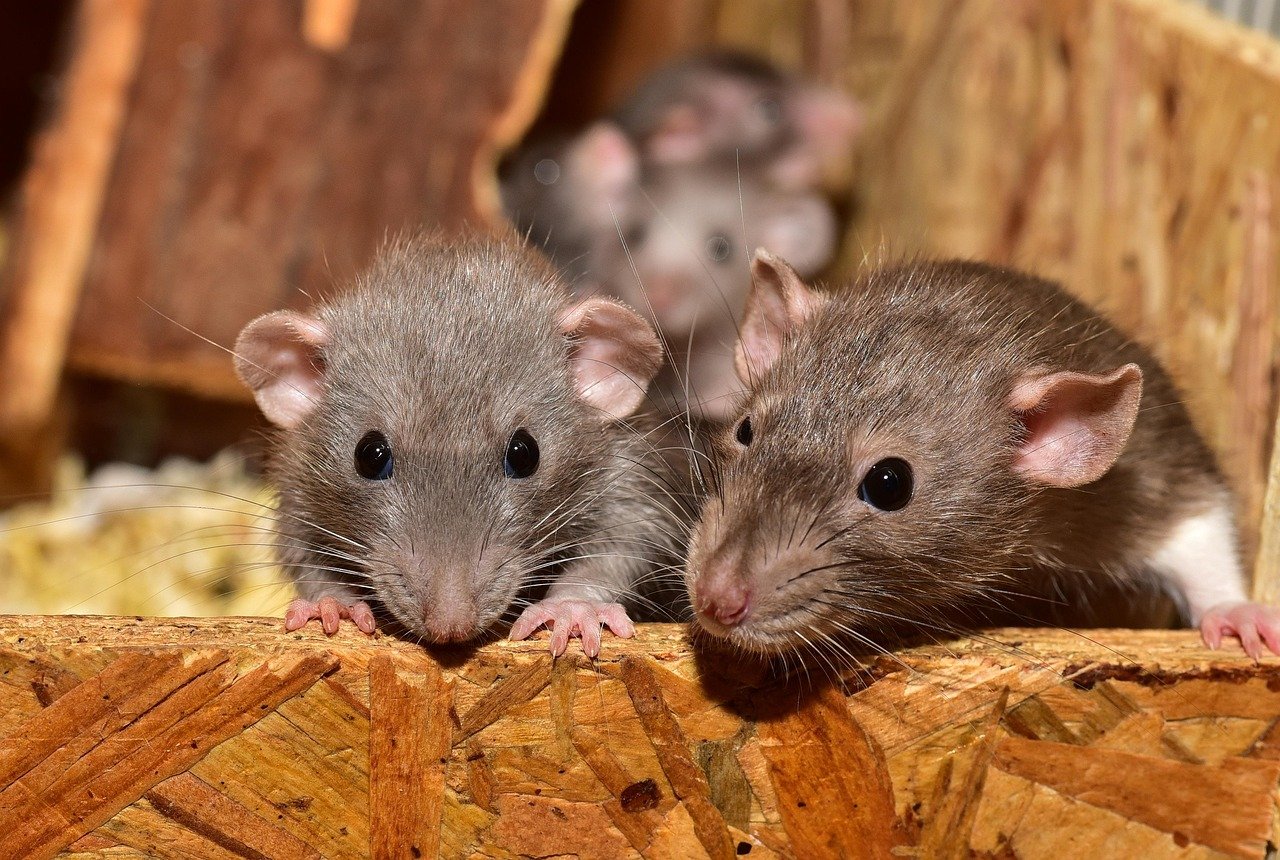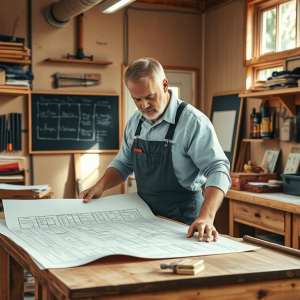Last Updated on September 22, 2025 by teamobn
If you’ve ever peeked outside and sighed at a tired patch of grass and scattered toys, you’re not alone. Many parents dream of a kid-friendly backyard where their children can play safely, explore, and burn energy without breaking the bank.
Fortunately, you don’t need to hire a professional landscaper or spend thousands to create a fun, safe outdoor space your kids will love.
Here’s how you can transform your backyard into a kid-friendly paradise while sticking to a DIY budget.
Contents
- 1 Clear the space for safety
- 2 Use what you already have
- 3 Plan play zones based on age
- 4 Build a budget-friendly sandbox
- 5 DIY water play
- 6 Refresh with mid-project junk hauling
- 7 Nature exploration corners
- 8 Install a DIY hammock or swing
- 9 Create a chalkboard or art wall
- 10 Add stepping stones and a path
- 11 Prioritize shade
- 12 Pay attention to safety
- 13 Endnote
Clear the space for safety
Before you think about adding a sandbox or hanging a tire swing, you need a clean slate. Kids need space to run around safely, so removing hazards like thorny plants, sharp debris, old fencing, or broken furniture is essential.
To start fresh, remove old playsets or unsafe debris. Once your yard is clean, you’ll feel more motivated to map out where each play zone will go without worrying about safety hazards in the grass.
Use what you already have
Take a walk around your garage or basement. Old wooden pallets can become sandboxes, and unused tires can transform into swings or obstacle course pieces.
If you have leftover paint, you can refresh an old picnic table or create stepping stones with bright, fun colors.
Repurposing existing items not only saves money, but also keeps useful materials out of landfills, making your backyard refresh eco-friendly.
Plan play zones based on age
Not all kids play the same way, so think about your child’s age and interests. For toddlers, sandboxes, water tables, and shaded, soft, grassy areas are best suited to crawling.
If you have elementary-aged kids, then swings, climbing walls, and nature zones are a good fit.
For tweens, create sports areas, slacklines, or a small garden patch, they can manage themselves.
By creating zones, you can gradually build your kid-friendly backyard in stages without feeling overwhelmed.
Build a budget-friendly sandbox

A sandbox is a classic backyard addition that doesn’t require a professional installation. You can use reclaimed wood or old tire rims as the sandbox frame, line it with landscaping fabric to prevent weeds, and fill it with play sand. Add a small plastic bin nearby for sand toys, and consider a simple tarp cover to keep animals out when it’s not in use. It’s an excellent feature that will keep your kids entertained for hours.
DIY water play
Kids love water, especially on hot days, and you don’t need an expensive pool to make your backyard water-friendly. You can use a plastic storage bin as a mini splash table, repurpose an old PVC pipe into a DIY sprinkler with drilled holes, or fill a shallow kiddie pool for water play and easy cleanup.
Always supervise water play and drain water after use to prevent mosquito breeding and possible mold.
Refresh with mid-project junk hauling
As you add new elements to your backyard, clutter and leftover debris from your DIY projects will accumulate quickly. It’s easy to end up with leftover wood scraps, broken plastic pieces, or unusable branches that take up valuable play space. This is why you will need junk hauling services to save you time and energy.
Calling one of these services allows you to keep your backyard clutter-free while maintaining a safe environment for your kids to play and explore. A clear space means more room for the projects your kids actually enjoy.
Nature exploration corners
Creating a small nature zone in your backyard encourages curiosity and creativity. You can set up a small raised garden bed where kids can plant herbs or easy veggies like cherry tomatoes.
Consider a “bug hotel” made from stacked sticks, pinecones, and hollow bamboo for insect observation or a bird feeder station to attract feathered friends, teaching kids about local wildlife.
These nature corners can be simple or as involved as you want, helping your kids appreciate the outdoors.
Install a DIY hammock or swing
Swings are often the highlight of any kid-friendly yard, but you don’t need to buy a pricey set if you have a sturdy tree. You can hang a tire swing with a strong rope and install a similar wooden seat for under $30 using online tutorials. Alternatively, a hammock can be a cozy place for reading or relaxing, giving your kids a chill zone for downtime.
Create a chalkboard or art wall
Kids love to draw, and an outdoor chalkboard wall encourages creativity while keeping your indoor walls free of crayon masterpieces. Use an old piece of plywood painted with a chalkboard paint or hang it along a fence for a vertical art space.
Add a weatherproof container nearby to store chalk, sponges, and washable paint supplies, allowing your kids to enjoy art in the fresh air.
Add stepping stones and a path
Creating a path using painted stepping stones is a fun and affordable way to add color and organization to your backyard. You can buy inexpensive concrete pavers or make your own with cement molds, allowing your kids to help paint them with bright colors, handprints, or nature patterns. Stepping stones can guide your kids from the sandbox to the garden or swing area, encouraging exploration while keeping them out of muddy patches.
Prioritize shade
Summer sun can quickly turn playtime into a sneaky meltdown, so adding shade is important. If you don’t have large trees, consider hanging a shade sail over a play area, using a large outdoor umbrella, or creating a small teepee using bamboo poles and a canvas sheet. Shade will help keep your kids cool while extending the time they can comfortably play outside.
Pay attention to safety
Safety is important in a kid-friendly backyard. Cover sharp edges on raised garden beds with pool noodles. Check and secure all climbing structures. Use mulch, grass, or rubber mats under swing areas to soften falls. Regularly inspect your DIY installations, as weather and active play can loosen screws or shift materials over time.
Endnote
Creating a kid-friendly backyard on a DIY budget is absolutely doable, even if your space feels small or your funds are tight. Remember, your backyard doesn’t need to look like a Pinterest-perfect playground to be magical. It just needs to be safe, engaging, and a place where your kids can run, laugh, and make memories without screens.






